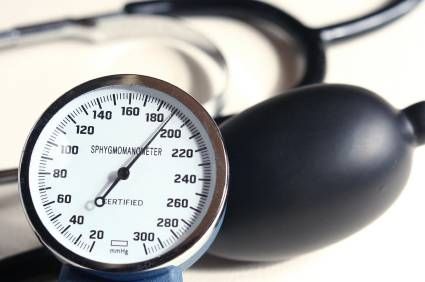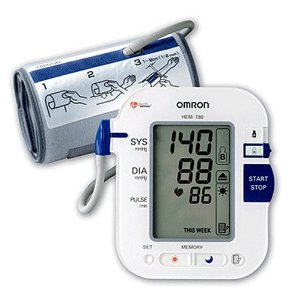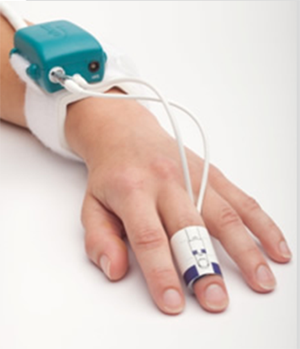Categories
Types of Blood Pressure Monitors for Accurate Readings

Do you know that high blood pressure is the risk factor for stroke and heart attack, vision loss and kidney diseases? This is why it is of top importance to know whether it is normal in your case. This is what a blood pressure monitor is for. It helps to get regular and accurate blood pressure readings and learn more about your health. And it is also important to choose the best blood pressure monitor.
Contents
How to Use Blood Pressure Monitor?
Using a blood pressure machine is easy. Wrap the monitor right around your wrist/arm and pump the air into it in order to stop the blood flow through the main artery. Let the air out slowly to release the blood through the vessels. This is the way the measurement can be taken.
If you have a digital model, two numbers will appear on the monitor. The first one measures systolic pressure – the one in the arteries, when the heart beats filling them with blood. The second one indicates diastolic pressure – the one in the arteries between the heartbeats.

The normal blood pressure may range from 120/80 and to 139/89. The systolic one is over diastolic. When you see that the reading is high on several occasions contact your physicians.
It is important to take the blood pressure measurements regularly, at the same time and under the same conditions. The perfect time for taking measurements is in the morning after waking up. It must be done before breakfast and other major activities and exercises. This ensures a base blood pressure measurement. Before the procedure relax for 5-10 minutes.
Try to avoid smoking and caffeine for half an hour prior to testing. Why? These substances can increase the rate. Keep in mind that proper fitting is essential for the accuracy of results.
Digital Blood Pressure Monitor
According to the latest researches, digital blood pressure monitors can do a lot more to manage the hypertension. Many modern models include talking functions that can help to guide a patient through the entire measuring process. Besides, they read the results out loud.
A patient is able to choose a blood pressure machine that stores the date and readings, as well as calculates averages for long-term monitoring. Today there are several types of digital monitors:
- upper arm blood pressure monitors
- wrist blood pressure monitors

Many patients state that the second models are more compact and convenient, which makes them easier for use. Automatic monitors have special cuffs, which inflate without any need to use a bulb.
Finger Blood Pressure Monitor
What about finger blood pressure monitors? They are regarded to as the newest options that are available for at-home testing. There are several types of models. The most traditional ones use a cuff and gauge that are placed around the upper arm and determine blood pressure. A finger blood pressure monitor provides digital readouts on a screen.
Most modern finger monitors are pretty small and portable. Besides, they are very convenient for carrying even in workplaces. If you are recommended to start regular monitoring procedure, such devices are perfect for you. When you are buying a pressure monitor, make sure the model has all the features that are very important in your case. The basic ones are:
- accuracy of the device
- clear and readable numbers
- correct cuff size

Before making your final choice, consult your doctor to know exactly what model you need and what features you should pay special attention to. Thus, the purchase will be cost-efficient.
However, small size is not the only reason why the monitors are so popular. Another reason is the fact they are the optimal devices for measuring blood pressure in children. With these monitors children stay calm during the treatment procedures and reading of results. No matter how serious the health condition is, these blood pressure machines allow remaining proactive, while monitoring patients’ health.
Ambulatory Blood Pressure Monitor
What do you know about ambulatory blood pressure monitors? These are special devices that consist of a blood pressure cuff worn on the patient’s arm. It is attached to a recording device, which is worn on a belt. The recording device is usually the size of a CD-player.

The blood pressure machine of this type is worn for 24 or 48 hours, recording blood pressure periodically (at 15- or 30-minute intervals). The device helps to provide the physician with a full record of one’s blood pressure for a 1- or 2-day period.
An ABPM provides diagnostic information that the system is able to measure, namely:
- morning surges in blood pressure
- BP variability
- more accurate estimation of true blood pressure
- dipper status – overnight changes in blood pressure
Such devices are recommended, when there is a need of:
- obtaining a 24-hour record, which is much more reliable than 1-off measurements
- detecting white coat hypertension
- hypertension research and review of a 24-jour profile of antihypertensive medication
- finding out the response to treatment
- research of masked hypertension
- prognostic use: usually higher readings on a ambulatory blood pressure monitor are associated with increased mortality
- checking the episodic dysfunction or autonomic dysfunction
- understanding hypotensive symptoms while on antihypertensive medications
Weighing all pros and cons of these types, a physician can suggest what type of blood pressure machine should be chosen.



